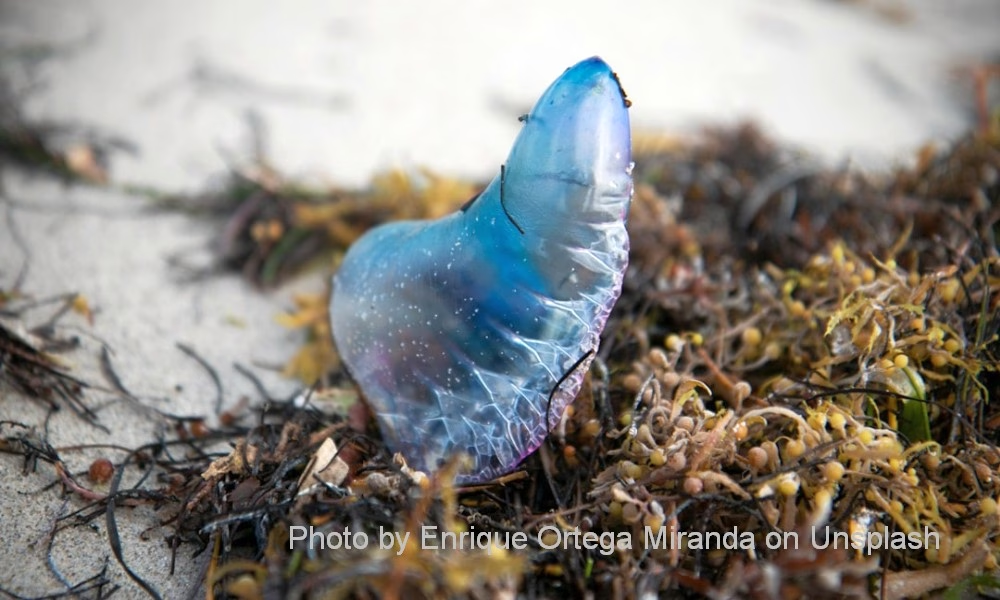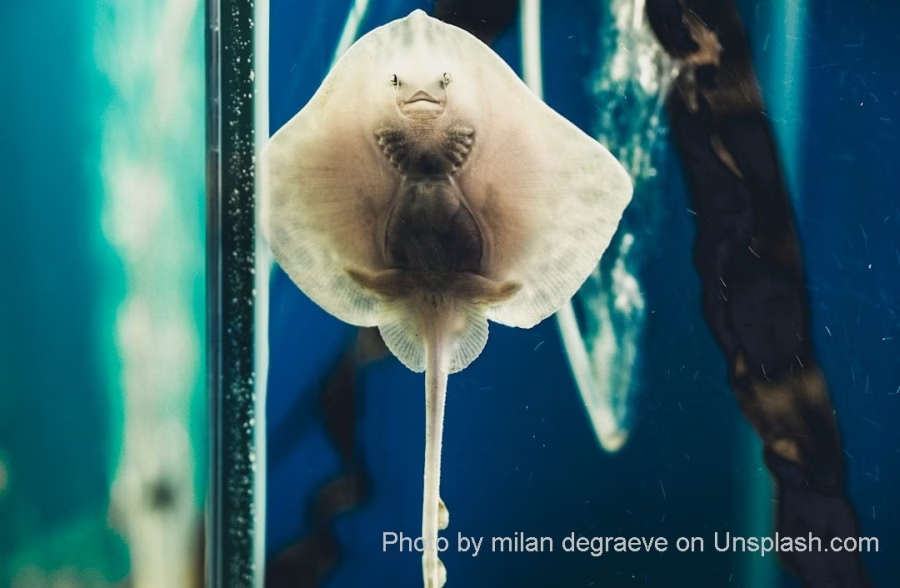
By J. Lee Austin, MD
Things That Make You Go “Ouch!”
As promised, we continue our endeavor of trying to help folks make the most of their coastal adventure. As noted in our prior ramble, the goal is not to frighten, but to maximize the odds of a safe, successful experience. A bit of forehand knowledge can make a huuge difference in the health and happiness of you and your homies.
Moving past the admittedly mundane subjects of Sun and Sand, let us venture into the more stimulating and penetrating realm of Stingers and Stabbers. Hey that’s a good name for my band. I don’t have a band, but if I did it would totally rock.
J. Lee is a contributor to CrystalBeach.com Local News, and is the founder of The Good Help Network, a reader-supported publication.
We begin with an iconic visitor of beaches the world over, the decorative and translucent Portuguese Man o’ War, scientifically known as Physalia physalis, or the “blue bottle” for us rednecks.
Often mistaken for a jellyfish, this is one of the invertebrates known as Siphonophores, huge marine predators that can reach 150 feet long, dwarfing all other animals in length, even whales. The Man o’ War, while actually not as long a foot-long hot dog, has tentacles that can reach 100 feet in length. That’s further than I can throw the shot put. By about 98 feet.
Named after the Caravel, a type of sailing ship of the 15th and 16th century (used by Columbus himself), the Man o’ War has no means of locomotion, other than a gaseous bladder sac acting as its “sail.” That said, it actually travels faster than jellyfish by using the winds, currents and tides to get around. They live in colonies, so if you see one, keep the eyeballs peeled for more.
Unless you have an insane bet with drunk buddies at a bachelor party, you do not want to be stung by these beautiful denizens. Excruciatingly painful, they can wreck your day. If stung, rinse immediately with lots of salt water, not fresh, then vinegar. Then pluck any clinging stingers out, using gloves or forceps, for obvious reasons. Soak the wound in hot water (110-115F) for a bit, then use ice packs. Forget about urinating on it, possibly the worst wives’ tale ever. The old wife that made that one up was surely laughing her spleen out.
The sting is rarely lethal, but smaller folks like children who get the tentacles wrapped around them can be at serious risk. Bottom line: If you see even One of these, it’s best to avoid the water. And don’t touch those on the sand as they can sting for days after getting beached. While I don’t recommend running them over with your golf cart, it does make for a festive popping sound that entertains the kids and may put them out of their misery. The gas bags, not the kids.
The Texas coast is blessed with a plethora of jellyfish species, most of which are not hazardous to humans, with some producing but a mild stinging sensation. Therapy for their stings is similar to the above … salt water rinse, vinegar, hot water immersion, baking soda slurry, made with salt water. Never use fresh water as this can cause osmotic rupture of the nematocysts and worsen the pain. I bet that’s what you were thinking.

Our next player in pain has the hazard written right there in its name … the Stingray. The Atlantic Stingray and Southern Stingray are extremely common in our shallow waters. They mean us no harm and there is no conspiracy to sting us all to extinction. Probably a hoax concocted by the flat earthers, I’m guessing. Who else would do such a thing.
The number of injuries reported from these cartilaginous critters is 750-2000 per year, according to the National Center for Biotechnology Information. Fatalities are considered rare, one to two annually. Reminds me of the wise guys in med school who would quip inanities like, “No disease is rare to the person who has it.”
The good news is that rays are not aggressive and will quickly skedaddle when approached. Shuffling your feet is a good way to let them know you’re stomping around in their habitat and wish not to be stung. Simultaneously singing “Shuffling Off to Buffalo” has not been shown to help.
The defensive spinal blade weapon on their tail can inflict fiery pain and the barbs can stick in the skin. So if you get hit, rinse off the venom in the salt water and extract any visible barbs. Similar to the Man o’ War, immersing the wound in hot water as soon as possible inactivates the venom and relieves the pain. Fits of expletive exclamation, while commonly employed, don’t do much for the discomfort.
Unfortunately the stings can be complicated by punctures and lacerations, which may require professional attention … further irrigation, x-rays for embedded barbs, suturing, antibiotics and other billable things. Less common effects of the venom are headaches, sweating, dizziness, nausea, vomiting, diarrhea, fainting, muscle cramps, shortness of breath, cardiac arrhythmias, low blood pressure and seizures. Wading fishermen are probably not wearing those thick and tall boots to make a fashion statement.

Turning now to a more delicious subject, Texas Blue Crabs are plentiful here and while they have been known to bite (actually pinch), they are really quite shy. Should they latch on to your piggies, just kick them off. They’re not trying to eat you, except in the movies. And by the way, that giant crab at Gaido’s in Galveston is about as real as the Easter bunny.
Last but not least are The Jaws, speaking of things eating you in the movies. According to the Florida Museum’s International Shark Attack File, there have been a total of 44 unprovoked shark attacks on the Texas coast since 1911. If my Barbie math is correct, that’s an average of 0.385 per year … so about as likely as being eaten by that Easter bunny.
Now for the annoying disclaimer: While I actually am a doctor and did not play one on TV, none of this is to be considered medical advice. Or any advice at all, really. More like fun with facts, yeah that’s it.
Best of luck to all in the magical world of Mother Nature and here’s to everyone having a fabulous, memorable trip … come to Bolivar! ~~ j ~~
“Step with care and great tact and remember that Life’s a Great Balancing Act.” ~~ Dr. Seuss




